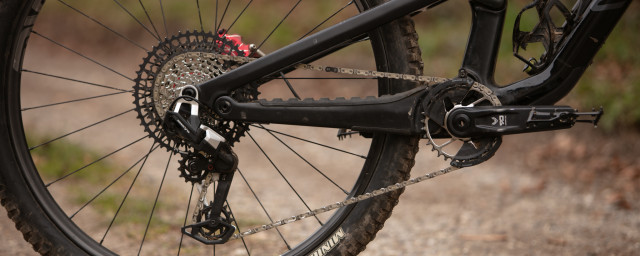What is the spirit of gravel biking?

There’s a great dichotomy in cycling. It’s part active transport, fundamental to achieving the common good of stalling the climate crisis, but it’s also a rare and valuable blend of mindfulness and outdoor activity.
- Are gravel bikes old-school mountain bikes?
- Gravel bike racing – everything you need to know
- Gravel cycling: Unsupported vs organised gravel event
Off-road cycling, as an adventure and fitness activity, has several communities. Some would even refer to them as tribes, with jealously guarded traditions and wrapped preconceptions about true mountain biking or any kind of off-road riding.
Non-riders might think of a broad mountain biking concept. Still, you could be a cross-country racer, endurance racer, enduro mountain biker, trail rider, single-speeder, downhill racer or freeride mountain biker. And each of those sub-disciplines desires to be recognised as a true, independent and authentic version of mountain biking.
Diversity is what makes off-road cycling great
This siloing of mountain biking creates much demand for product development, pandering to and exacerbating the perceived ‘differences’ between different genres. And at times, blurring the lines of distinction between them. It’s not a bad thing, either.
Gravity mountain bikers have influenced the geometry of cross-country bikes positively, while endurance riders have created lighter components, benefiting enduro riders.
But what about gravel bikes? The newest sub-discipline within off-road cycling has grown tremendously. When the first dedicated gravel bikes arrived in the mid-2010s, some dismissed them as cyclocross bikes with another name. Or lighter adventure touring bikes. They were expected to be a fad, but they’ve endured and evolved.
Gravel biking has established itself as a credible category with dedicated interests and rider demand. Specific product development has delivered a new generation of 700c tyres, in widths and tread patterns that would have been inconceivable a decade ago.
Popularity should not be an issue
How popular does something have to become for it to lose its essence? That seems to be the issue with those who criticise the commercialisation and popularity of gravel biking.
Downhill and freeride mountain biking has a natural barrier to mass participation: skill and risk. The injury consequences and attrition rate with extreme mountain bike riding keep the community of riders small. But why should gravel riding be judged because it is growing and becoming more popular?
There are sound reasons why a broad spectrum of riders are gravel biking. Roads are dangerous. Gravel bikes are perhaps the purest reaction to a world with too much vehicular traffic.
Beyond road riders gravitating to a format which allows drop handlebar riding with reduced collision risk, mountain bikers are aligning with gravel bikes for their own reasons. What reasons? It is an ironic outcome of design iteration and product evolution, but modern mountain bikers have become too capable.
Geometry, brakes, suspension and tyres are now so good that rider feedback is too muted on many singletrack trails. Even a 120mm downcountry-style mountain bike is nearly too capable for most mountain bike rides.
Riders who desire a rawer experience without the risk of enduro or downhill riding, often speak of ‘underbiking’. Venturing onto trails with a bike that has smaller tyres and a lot less suspension travel, to test their skills and have a purer riding experience. A gravel bike is the most theoretically ‘underbiked’ version of singletrack riding you can do.
To legacy riders who have been mountain biking since the 1980s and 1990s, gravel bikes, but for their drop handlebars, are what period mountain bikes of that era were. And some riders want to experience that raw trail feedback again.
Popularity should never diminish purpose. Yoga isn’t less valuable for an individual because millions of others also do it. And it’s the same with gravel biking. As the market size and events calendar for gravel biking increases, product development has created better bikes and accessories, which enable more independent adventure riding. True to the spirit of gravel biking, at its essence.
Recapturing the memory of legacy mountain bikes?
It's interesting to reflect on the likeness of gravel bikes to early mountain bikes. The commonalities are striking in geometry and silhouette.
Swap out the drop handlebars for a flat ‘bar cockpit, and modern gravel bikes are nearly indistinguishable from the 1980s or early 1990s mountain bikes at a distance. There are even short-travel fork options available now, which aren’t too far removed from what would have constituted a decent 1990s mountain bike fork. And herein is the true purpose and spirit of gravel bikes: all-terrain riding, in any weather.
Mountain biking started as a secretive and fringe activity in Northern California. The founding riders of what became mountain bikes never envisioned it to become multi-disciplined and advanced. They wanted bikes to explore terrain beyond the familiar, to enable adventure. And gravel bikes are a 21st-century version of mountain biking’s original vision: taking in all terrain types at an efficient cadence to tally the miles for big adventure rides.
The first mountain bikes were designed to pedal efficiently and confidently ride gravel and fire roads. They weren’t engineered or built for descending technical singletrack, rushing rock gardens, launching jumps or landing drops. Gravel bikes are a lot more on-theme with what mountain bikes were at their origin.
Many current gravel bike solo riders would have been hardy or committed enough to ride all-terrain routes alone, with the gear available a decade ago.
Racing improves everything
Think of the significant improvement in gravel bike tyres, frame clearances, handlebar shapes and bike bags. The market diversity and richness of choice are beneficial to all. Off-road cycling, under mountain biking and now gravel riding, has always been more daring in its innovation and product diversity than road cycling. If gravel biking redefines categories and pushes product development, that should be celebrated, not questioned.
The concept of UCI racing diluting the adventurous spirit of gravel biking is unfounded. Racing increases the demand for lighter, better, hardier gear and components. Enduro mountain bikes would have evolved to the standard they are now if the Enduro World Series did not come into existence back in 2013.
Organisers are responding to wayward component hybridity. This was evidenced at the world’s most prestigious gravel bike race, Unbound Gravel, where a seeping obsession with aero-bars and handlebar modification was outlawed, to preserve the ‘spirit’ of gravel biking.
Some gravel riders will relish the opportunity to compete in mass participation races. Other gavel riders will value solo rides of their own design. Both journeys are worthy and faithful to the spirit of gravel biking, which is a simple tenant: riding the most efficient all-terrain bikes available, to enable more adventurous routes.













1 comments
For me, graveling is simply taking watever bicycle you want that has no motor in it and to use it to ride tours that take in paved surfaces, hardpack, stretches of mud...whatever..and may the best -or the one who most judiciously selected his material- win.
Then the godforsaken UCI stepped in and before long there will be rules about the type of socks that are to be worn. Look at what happened at unbound with the aero bars. What BS. If people feel that the weight penalty from these things is compensated by their convenience, by all means, let them mount aero bars (and good luck not breaking every bone in their face if they inadvertently hit a pothole).
Crap, I hope they don't get their claws on the audax world.